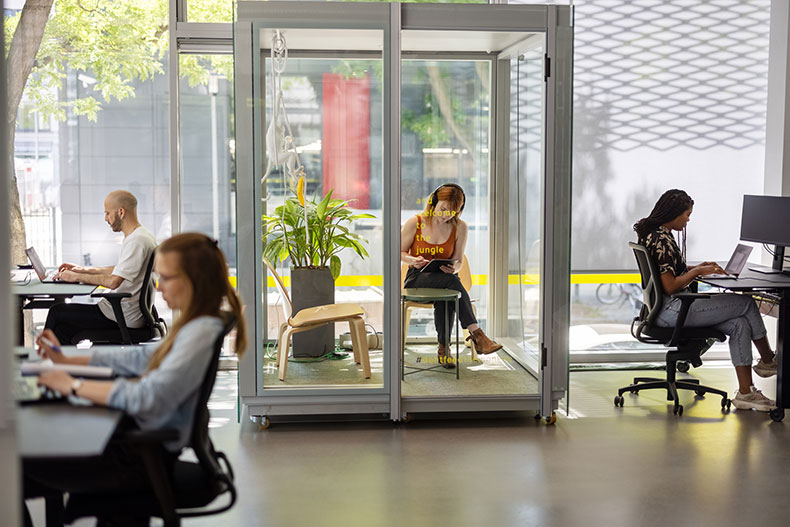A new stance for the office ergonomics standard

25 years after its publication, the NF X35-102 voluntary standard on office ergonomics has been given a facelift. The 2023 version takes into account the profound changes that the service sector has undergone in recent years. A reference text designed to be easy to apply for all companies concerned.
The spread of open spaces, digitalization of practices, the rise of telecommuting… In twenty-five years, the traditional office has undergone a profound transformation. Twenty-five years is precisely the age of NF X35-102, the first voluntary standard to define best practice in office ergonomics. The first version was published in 1998; a 2023 version is now available in the AFNOR collection.
This text, which was highly innovative at the time, was essentially concerned with surface areas, indicating for example the minimum dimensions of a closed office,” recalls Jean-François Cholat, who headed up this standardization committee – hosted by AFNOR – from 2000 to 2016. But back then, computers were fixed, each employee had his or her own printer, cell phones didn’t exist and the Internet was just starting to take hold… And it was still the reign of the individual office, everything was relatively simple. Since then, the multiplication of open spaces has reshuffled the deck, calling for a more in-depth reflection. ” Another factor in this evolution is confinement, which has made telecommuting commonplace and eliminated its exceptional regime. In short, the recommendations set out in the 1998 standard were obsolete.
A guide to good layout practices
The AFNOR commission didn’t wait for a pandemic to come along to review the text. Ergonomists from major groups, independent consultants, health authorities… For six years, more than 25 participants worked on the new version of the guide. “This delay is not innocent: the members were quick to perceive the changes at work in the early 2000s. But rather than rush things, we thought it wise to observe, study and analyze feedback before embarking on a new version. And that’s just to keep up with reality,” emphasizes Jean-François Cholat.
In fact, that’s the guiding principle behind this text: to take a long-term approach by focusing on office design. The key point of the standard is to propose a design approach based on the analysis of uses and activities, without providing ready-made technical solutions. It also uses anthropometry, i.e. the dimensions of the human being, to design suitable workspaces. Height of desk and seat, minimum width and depth of work surface… The standard describes the best practices to be followed, workstation by workstation.
Teleworking objective
In the same way, the characteristics of the physical ambience of a model office are carefully described, based on recent international references on the subject: lighting, acoustics and heat. ” These also include very pragmatic elements, such as the calculation of clearance zones, to ensure that employees are not in the way and constantly disturbed by movement behind them”, explains Pierre Ottaviani, chairman of the standards committee. Another crucial point: meeting rooms. The standard describes how they should be laid out to offer the best possible comfort to those attending a videoconference: making sure that each participant is correctly seated, can see the screen in an appropriate posture, keeps his or her computer within easy reach, etc.
This voluntary standard is aimed not only at architects and office designers, but also at prevention and working conditions professionals and employee representatives,” explains Pierre Ottaviani. It remains very accessible, without jargon or overly technical terms, so that people in all types of company, including SMEs, can make it their own if they want to rethink or redevelop a space. ” The aim of the standard is to design and fit out a comfortable working environment, adapted to the activities and users involved, and in line with the prevention of physical and psychosocial risks. Essential in terms of productivity, performance and the fight against absenteeism! What’s next? Make way for teleworking! The players behind the new version of NF X35-102 are now working on the best practices in remote work ergonomics. You can take part in the work